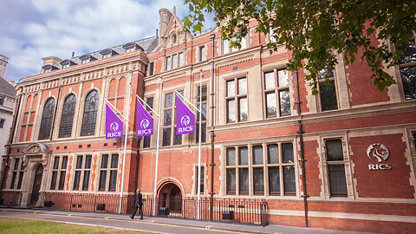Stakeholders in the construction industry are acutely aware of the positive impact technology can have on streamlining processes and improving outputs, but the barriers to adoption appear, in some instances, to be cultural rather than technical.
Last year, broadband provider Zen conducted a study of more than 100 IT decision makers in the construction industry. Their report, Bricks, mortar and digital transformation found that larger organisations saw virtual reality, cloud computing, software-defined networking, blockchain, and the internet of things as key to future development.
Of the construction firms that took part in the survey, 83 per cent said they had either completed a digital transformation project or have one currently underway. The direct advantages to these projects were found to be improved efficiency, cited by 61 per cent of respondents, and reduced operation costs, cited by 58 per cent of respondents. It’s worth noting that the cost of buying a solution should be categorised under capital expenditure: it is usually up-front and one-off. Operational expenditure is calculated independent of the outlay for software, as the saving is year-on-year.
Another report, Construction’s digital front line, from cloud solution company Causeway, was the result of discussions with 200 decision makers in the UK construction industry to understand how they are planning to invest in technology over the next 12 months.
The benefits to technology adoption were viewed from two angles:
- Commercial performance: increased project profitability, improved workforce productivity, reduced operating costs.
- Operational efficiency: supply chain performance, project and operational control, people management and client relationships.

DevOps – a set of practices to instil cultural change for successful digital transformation
The report signals that 2020 will be a pivotal year for the uptake of new technologies, with 81 per cent of respondents stating they will take greater leaps to improve their business digitally over the next 12 months.
The key initiatives to drive transformative change were found to be:
- standardising technology across the supply chain
- uplifting the skills pool
- ensuring senior teams are committed to drive innovation and
- improving supply chain collaboration.
Three out of four of these initiatives have something in common: they are about people rather than processes. Managing and developing teams, however, is often one of the biggest challenges preventing the successful adoption of new technology. Despite this, the survey found that 58 per cent of respondents have been successful at attracting and retaining new digital talent.
Finding the right technology
The core question, therefore, seems to be: how do we get the most out of our people – and by association, our teams – while also making the most of the opportunities that technology offers?
The first step is to identify the suitability of the technology – it’s not always obvious. The suitability of BIM, for example, has been well reported over recent years. The benefits of BIM include having a unified, team view of all data integrations and visualisations to allow for improved team decision making.
But what about, for example, project team meetings? When does it make sense to have a virtual meeting – potentially saving on cost and time – and when is a face-to-face meeting necessary? And what effect does this have on our teams?
One MRICS quantity surveyor observes that many project meetings need to be face-to-face. There are those that, for example, require physical observations and design-led discussions in real-time, while it often makes sense to conduct pre or post-project meetings dealing with contracts, price, stage-of-design and site conditions virtually.
“The core question, therefore, seems to be: how do we get the most out of our people – and by association, our teams – while also making the most of the opportunities that technology offers? ”
It could be argued, however, that although these pre and post-project meetings don’t necessarily require an on-site presence, conducting a pre-project meeting face-to-face is an opportunity to meet the people who will become part of your team. It is also a good opportunity to build a team culture and define behaviours at the very start of a project.
The MRICS quantity surveyor adds: ‘Embracing digital is without doubt a huge benefit in terms of productivity, efficiency and cost-savings. It’s about deciding what’s the best fit for each situation. In terms of team meetings, if a site meeting is needed and everyone is at the location, it’s important to consider what the added value of any technology is.’
In other words, don’t use technology for technology’s sake. One way to test whether it’s necessary is to answer the following four questions.
- What’s working well?
- What could be improved?
- How would technology benefit my team practically on an individual and a group level?
- Who can help me embed trust to allow for a culture that embraces digital?
Development and operations
Once a decision has been made to implement a suitable technology solution, how do we achieve the most out of the technology, and our people?
Some of my work on embracing digital momentum as a leader led me to develop a blueprint for embracing development and operations (DevOps). This is traditionally a set of practices that combines software development (Dev) and IT operations (Ops) as a culture, rather than just a technical tool for developers and operations communities (see Figure 1). In this context, you can consider Dev as the resources delivering the architecture and build, and Ops as the people supplying the materials and coordinating the logistics to make that build come together.
The idea is that everyone in the organisation shares the same vision for the organisation and their related role. In the military they call this the sharp end, where everyone – no matter who they are or where they rank – is heading towards the same goal. Another example, taken from the book The Phoenix Project explains, ‘If the restroom is busted and an engineer wastes 20 minutes to use one on another floor, the janitor is now responsible for a delay in deployment to production’.
When it comes to digital or technology it is about everyone collaborating, that is, being accountable and sharing a vision that points everyone in the same direction. The transition to digital and availability of technology across industries means that DevOps is no longer just a set of tools to speed up operational processes, it is the symbiotic relationship between technology and operational business lines as a means to change behaviour.
According to Adam Jacob, the chief technology officer of Chef, a company that helps organisations with digital transformation: ‘The tools we use reinforce the behaviour; the behaviour reinforces the tool. Thus, if you want to change your behaviour, change your tools’.
There are several steps to take to transform your business using DevOps from both a technological and behavioural perspective:
- Define digital transformation. Everyone has a different definition of digital transformation. Before even considering digital changes or organisational restructuring, it is important to establish an understanding of how the transformation will apply to your organisation. Set clear mission statements regarding the digital transformation and its implications for everyone in the business.
- Don’t jump on the trend bandwagon. While it is good to know and understand the current buzzwords, always remember who is taking the journey. Conduct a comprehensive review of all your current processes and procedures: identify bottlenecks or other problem areas, and try to solve these first.
- Build a dream team. Look around at your talent and complete an assessment to identify any skills that need to be developed, particularly digital skills. Don’t just assume the IT department will take the lead or direct the digital aspect of the transformation. Everyone has a responsibility towards achieving digital transformation, not just IT.
- Empower everyone. A successful transformation is when everyone in the organisation takes responsibility and manages the change. Instilling this belief of shared responsibility is critical. Develop a culture where everyone understands the value of the change both to the organisation and their own role, and is supportive and willing to adapt as necessary.
- Encourage a digital transformation mindset. Digital transformation will only work with collaboration. Therefore, it is critical to foster a team mentality. The IT team will often lead on this as they are more familiar with the processes and with working towards a collective goal. If this is the case, leverage their experience to encourage and assist other departments to switch their mindsets and workflows.
- Model new behaviours. Although it is everyone’s responsibility to play a part in the digital transformation journey, it is particularly incumbent on senior executives to demonstrate their contribution to the change to the rest of the organisation. For example, in one energy company undergoing digital transformation, the leadership was aware that to implement a new data strategy, they needed a better understanding of the data’s significance. Each senior executive, regardless of their role, undertook data training and became well versed as a data citizen – a professional who aspires to use data techniques for insights and improved business predictability.
Ideally, a data citizen should:
- be able to identify which enterprise data is likely to be important
- know the tools required for working with the identified and valuable data
- be dedicated to this part-time craft as new knowledge is easily forgotten when not used.
The willingness of those in senior positions at an organisation to acknowledge that they need training demonstrates the possibilities for everyone in the organisation, and contributes to the successful implementation of a new strategy.
According to the Committee for European Construction Equipment (CECE), the civil engineering and construction sector is one of the world’s least digitised sectors, particularly in Europe. There are several factors that could contribute to this, including limited budgets, the wide range of stakeholders involved in any one project and the transient nature of construction projects.
However, if senior executives can overcome cultural resistance and communicate the value of digital transformation to all members of their team – and adopt these DevOps stages in their business – it could go a long way to creating a sustainable and successful transformation, not just for their organisation, but the industry as a whole.
- Christopher Sly is area vice president at HGS digital: csly@hgsdigital.com











